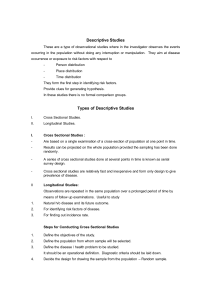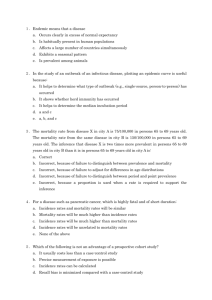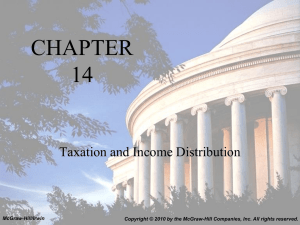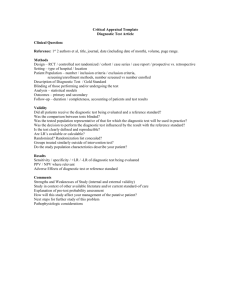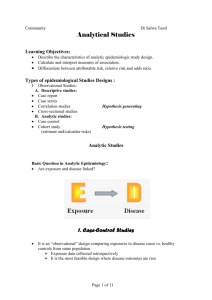Glossary - BioMed Central
advertisement
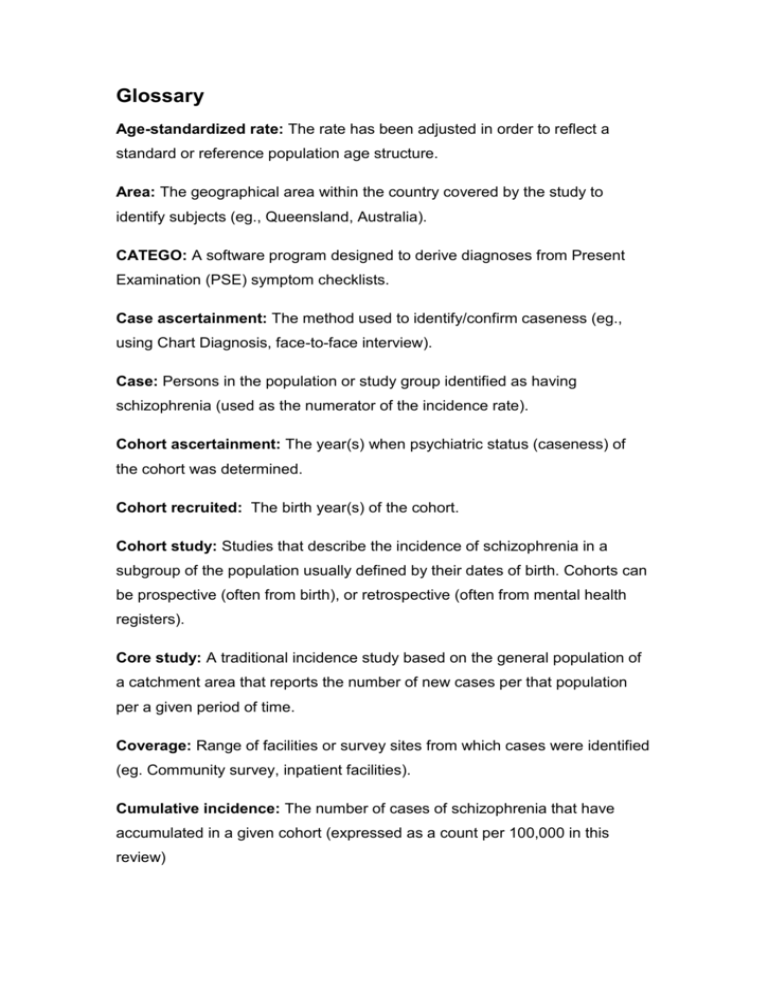
Glossary Age-standardized rate: The rate has been adjusted in order to reflect a standard or reference population age structure. Area: The geographical area within the country covered by the study to identify subjects (eg., Queensland, Australia). CATEGO: A software program designed to derive diagnoses from Present Examination (PSE) symptom checklists. Case ascertainment: The method used to identify/confirm caseness (eg., using Chart Diagnosis, face-to-face interview). Case: Persons in the population or study group identified as having schizophrenia (used as the numerator of the incidence rate). Cohort ascertainment: The year(s) when psychiatric status (caseness) of the cohort was determined. Cohort recruited: The birth year(s) of the cohort. Cohort study: Studies that describe the incidence of schizophrenia in a subgroup of the population usually defined by their dates of birth. Cohorts can be prospective (often from birth), or retrospective (often from mental health registers). Core study: A traditional incidence study based on the general population of a catchment area that reports the number of new cases per that population per a given period of time. Coverage: Range of facilities or survey sites from which cases were identified (eg. Community survey, inpatient facilities). Cumulative incidence: The number of cases of schizophrenia that have accumulated in a given cohort (expressed as a count per 100,000 in this review) Cumulative percent: Proportion of a defined population who experience the onset of schizophrenia by certain age, expressed as a percent. Diagnostic criteria: The diagnostic system(s) used to define caseness (eg. ICD, DSM). Diagnostic and Statistical Manual (DSM): An operationalized diagnostic system for psychiatric disorders. Discrete data: Rates (eg., from core studies) that do not overlap in time and place. Filters – rate level: Rules that select only one rate from multiple overlapping rates to contribute discrete data. Filters – study level: Rules that select only one study from multiple overlapping studies to contribute discrete data. Incidence rate; The number of new cases of a disorder that occur in a population over a given time period. In this review, we have expressed incidence rates as number of new cases per 100,000 per year. The International Statistical Classification of Diseases and Related Health Problems (ICD): A WHO-sponsored operationalized diagnostic system for health disorders. Nation: The country/political boundary where the study was undertaken (eg., Australia). Period of observation: The range of years covered by the study (e.g., 19671977). Person-years: A measure that combines the number of persons and the agestructure of the population and/or the period at risk for the population. Present State Examination (PSE): A comprehensive check list of psychiatric symptoms. Population denominator: Number of inhabitants of a given country/area/age groups and period of observation. Quantiles: Features of a distribution that describe cumulative percentages (e.g. 10%, 25%, 50%, 75%, 90%). The median is the 50% quantile. The interquartile range lies between the 25% and 75% quantiles. Rate: A result that reports the incidence of schizophrenia (expressed as count per 100,000 per year in this review). One study can produce many different rates (e.g. persons, males, females etc). The rate is the unit of observation for this meta-analysis. Rate Ratio (Incidence rate ratio): The incidence rate in the exposed group (eg.,migrant) divided by the incidence rate of the unexposed group/reference group (eg., Native born). Research Diagnostic Criteria (RDC): An operationalized diagnostic system for psychiatric disorders. Sex-standardized rate: The rate has been adjusted in order to reflect a standard or reference population sex ratio.

